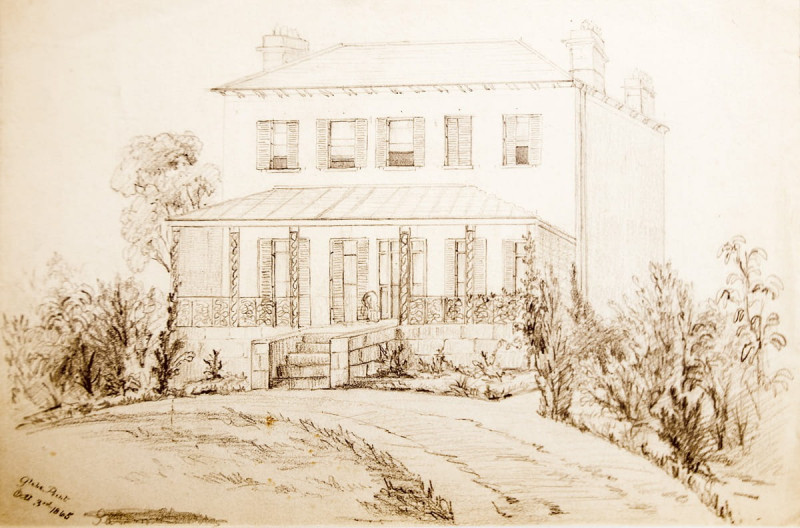In 2018 the home of colonial architect Edmund Blacket and part of Dumaresq’s Boissier Estate was State Heritage listed: “The building is a rare example of an early villa which is the last remaining 1850s villa within a garden setting on the eastern side of Glebe Point Road”.
Blacket designed many Sydney houses and, as an architect to the Anglican Church, his projects included St John’s Glebe. Commissioned as architect of the newly established Sydney University and St Paul’s College, Blacket chose to live close by in Glebe. He rented Hawthorn on the Boissier Estate before moving into his new house, designed by him and completed in 1858. Daughters Edith and Hilda sketched many local houses and scenes, creating an excellent early record of The Glebe. However, Sarah Blacket died in 1869 and her widower and children shifted to Balmain.
New owners Rosina and Robert Fitz Stubbs named the house Bidura. A “well known family of musicians”, they added the ballroom which adjoins the main house. By 1878 they had moved to Lynwood. Bidura’s subsequent owners were merchant Frederick Perks, physician Walter Burfitt and grister Rowley Walker.
In 1920 Bidura was bought by the Crown. Run by the Department of Child Welfare, it was used as a preplacement home for girls. Further accommodation was built in the extensive grounds. In 1983 a juvenile remand centre, designed by the Government Architect in brutalist style, opened on the Avon Street boundary. After failing in design as a prison, the centre operated as juvenile courts and Department offices.
In 2014 Bidura was sold by the State Government to developers. Strong opposition to proposals to erect highrise blocks on the site illustrates the conflict that arises between those wanting to preserve built heritage and those seeking a return on their investment.




